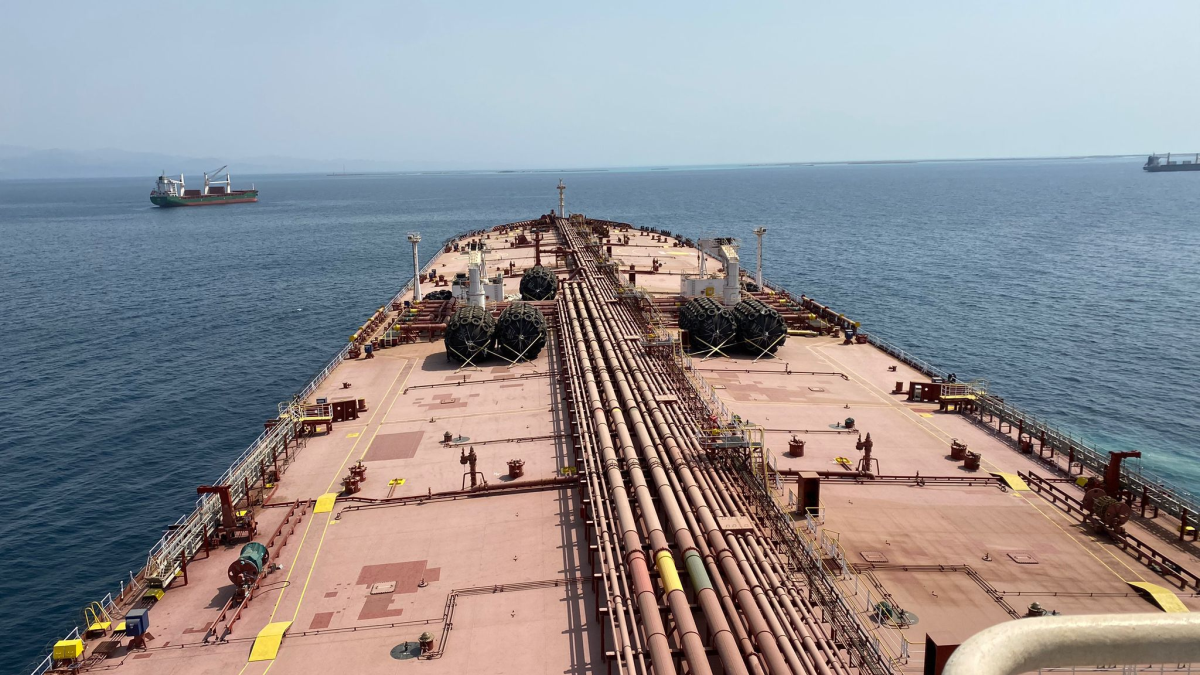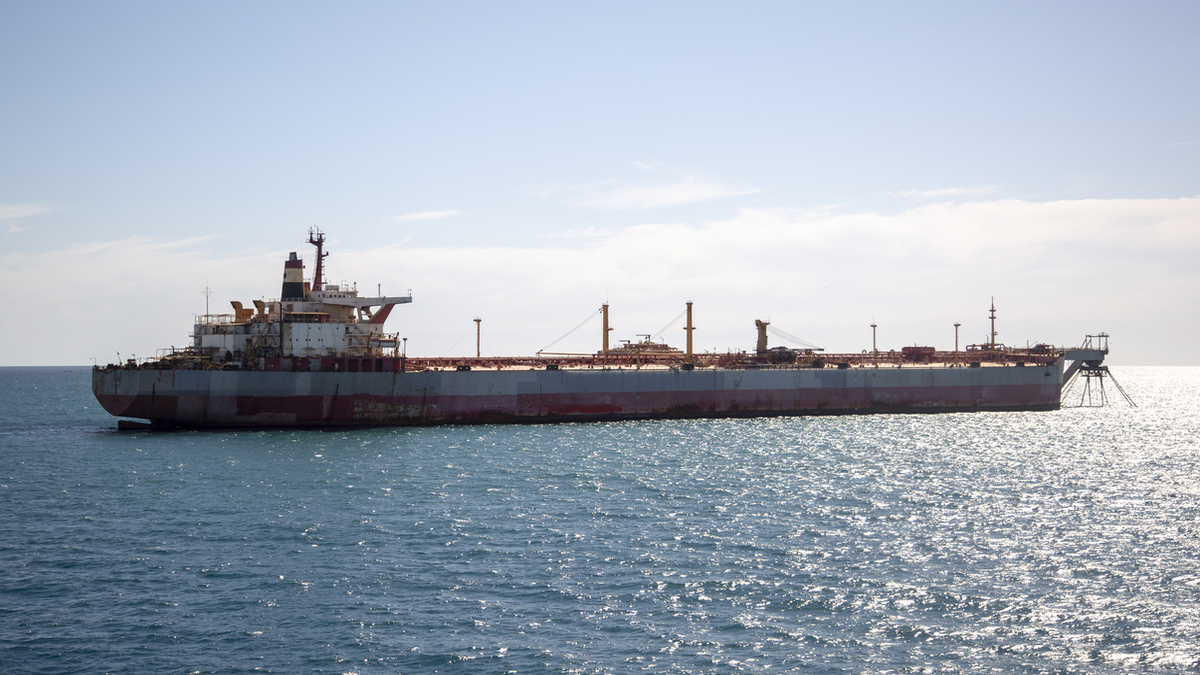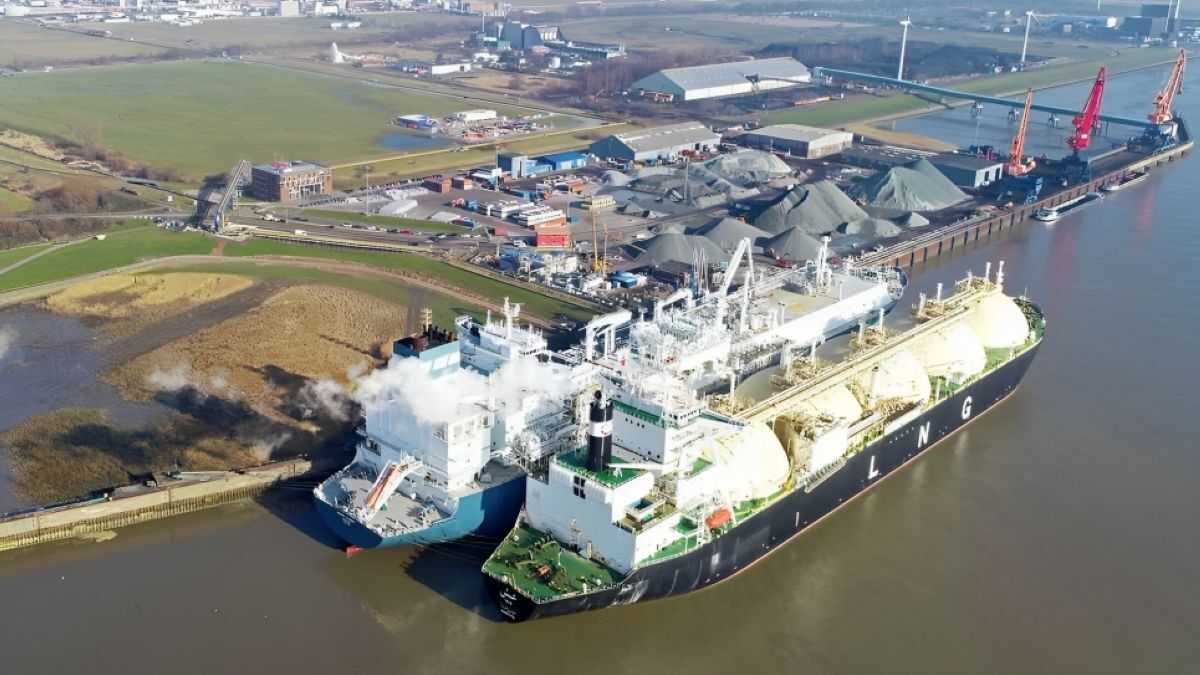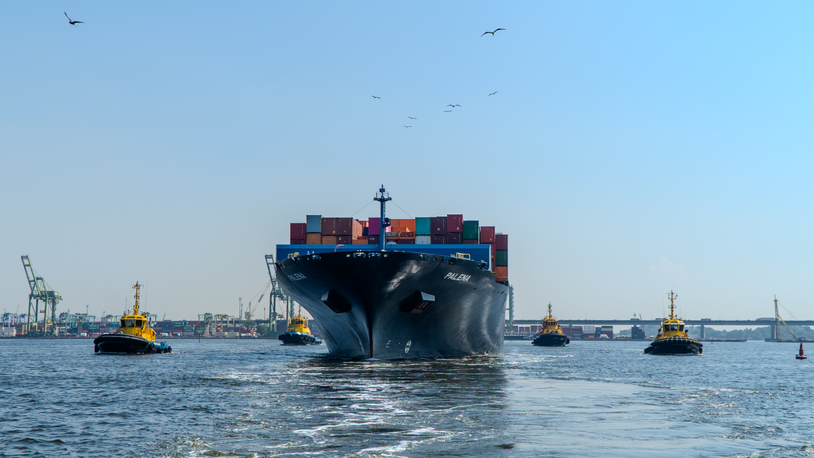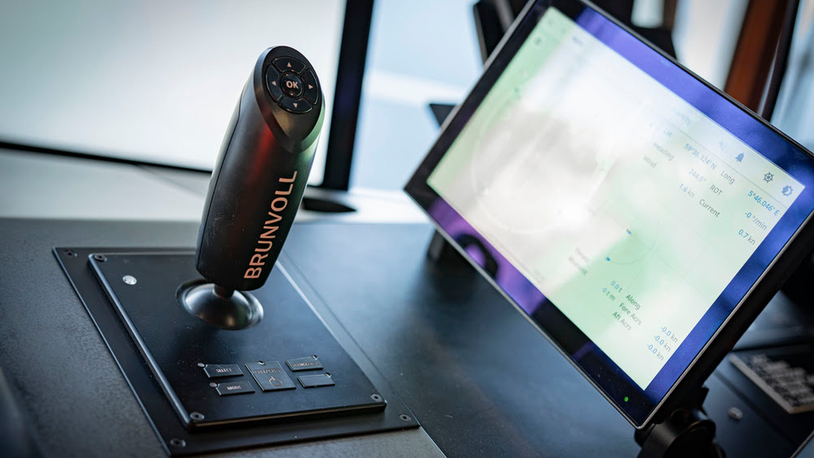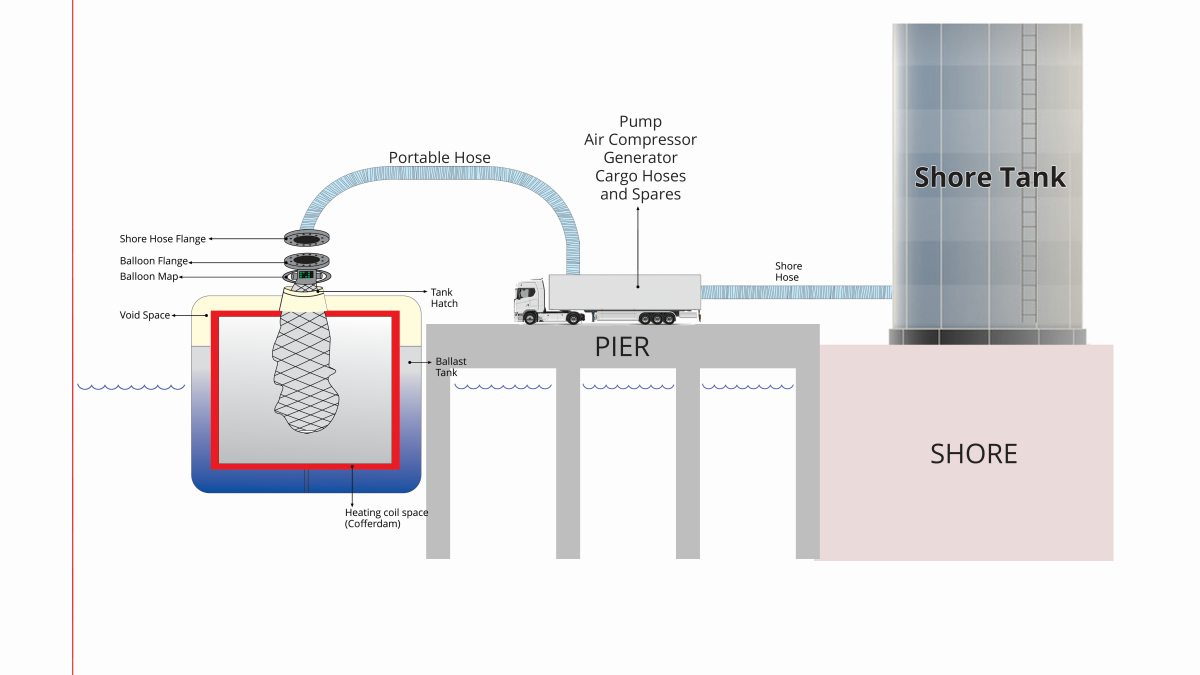Business Sectors
Events
Contents
Register to read more articles.
FSO Safer: 'critical work remains' after oil transfer from decaying FSO completed
The United Nations has renewed calls for funding after completing an operation to remove more than a million barrels of oil from floating storage and offloading facility FSO Safer – a decaying supertanker moored off Yemen’s Red Sea coast – that threatened a humanitarian and environmental disaster
After the transfer of oil from Safer to Yemen, formerly Euronav VLCC Nautica, the VLCC moved from its mooring alongside Safer to a holding anchorage this week.
According to UN spokesperson Stéphane Dujarric, the next stage in the operation requires installing specialised equipment for storing the cargo.
"Critical work remains,” Mr Dujarric said, noting a specialised buoy is yet to be delivered and installed and funding for towing and recycling FSO Safer is still needed.
To complete the project, the UN said US$22M is still required, with UN member states, the private sector and the global public having already provided US$121M in funding.
“We are counting on further generous support to finish this critical mission,” Mr Dujarric said.
Built in 1976 as a VLCC and converted a decade later to an FSO for oil, Safer is moored about 4.8 nautical miles off the coast of Hudaydah Governorate in Yemen.
The vessel’s structural integrity deteriorated significantly due to lack of repair and maintenance following the outbreak of the war in Yemen in 2015, putting the ship at risk of breaking apart.
14 August
Salvage company Boskalis, whose subsidiary SMIT is implementing the United Nations Development Programme (UNDP) operation to remove the oil from the FSO, has said "SMIT Salvage has removed all oil from FSO Safer."
During the course of the UN-co-ordinated operation, more than 1.1M barrels of oil was successfully transferred to a safe modern tanker moored alongside FSO Safer. The operation took some three weeks to complete.
"The successful completion of this complex operation has averted a major disaster that would have had huge humanitarian, environmental and economic consequences," Boskalis said.
Boskalis chief executive Peter Berdowski said the transfer of the oil to a "modern double-hulled tanker" Yemen that the UN purchased specifically for the operation, was key in "averting a potential environmental disaster of unprecedented proportions".
"Thanks in part to the efforts of the Dutch Ministry of Foreign Trade and Development Cooperation and the two years of preparations by Boskalis, we were able to successfully execute this complex operation on behalf of the United Nations. I would like to compliment our salvage experts in particular for successfully carrying out the work under very challenging conditions in the Red Sea,” Mr Berdowski said.
The VLCC was moored alongside FSO Safer on 23 July with support from two Smit Lamnalco tugs, and oil screens were installed on the bow and stern between the two tankers as a precautionary measure. Following the mooring operation, oil transfer pipes were connected between FSO Safer and the VLCC on 25 July and hydraulic pumps were installed to transfer the oil to the VLCC.
Boskalis said the work remaining for SMIT Salvage includes a tank cleaning that is expected to take approximately one week. Once its tanks are cleaned, FSO Safer will be prepared for transport to a green scrapping yard under the responsibility of the UN.
2 August 2023
Boskalis has explained some of the salvage operation work it has undertaken on FSO Safer in a social media post.
"To pump the oil to the tanker Yemen, hydraulic pumps are lowered into each tank of FSO Safer. During this transfer operation, inert gas is supplied to keep the tank atmosphere at safe levels during the operation. Once all the pumpable oil has been removed from Safer, a layer of thick oil will remain on the bottom of the tanks. This layer will be removed by a mobile spray tank cleaning machine, which will clean the inside of the tanks in an operation that is expected to take two to three weeks," the Boskalis post said.
26 July 2023
According to an update from the UNDP, the oil aboard Safer is being pumped into the replacement vessel Yemen (formerly Nautica) in a ship-to-ship transfer that is expected to take 19 days to complete.
After its arrival at the site on 30 May, marine salvage company SMIT, a subsidiary of Boskalis, stabilised 47-year-old Safer. The UNDP, which contracted SMIT, is implementing the operation to remove the oil.
Speaking from aboard the salvage vessel Ndeavor, the UN Resident and Humanitarian Coordinator for Yemen, David Gressly, said, “The transfer of the oil to Yemen will prevent the worst-case scenario of a catastrophic spill in the Red Sea, but it is not the end of the operation. The installation of a CALM buoy to which the replacement vessel will be safely tethered is the next crucial step. I thank donors, private companies and the general public for providing the funds that have brought us to this milestone.”
Mr Gressly has led UN systemwide efforts on Safer since September 2021.
Boskalis, which has kept a blog covering its operations on the FSO, said the ship-to-ship transfer would take between two and three weeks.
"Following the successful mooring of the very large crude carrier Yemen alongside FSO Safer off Yemen’s Red Sea coast, our SMIT Salvage colleagues were able to take the final precautions, connect the hoses between the two tankers and start the ship-to-ship transfer of the approximate 1.14M barrels of crude oil from the decaying FSO Safer into the replacement oil tanker Yemen. Pumping commenced 25 July at 10.45 local time," Boskalis said.
When Yemen arrived on site, the vessel was moored along Safer’s starboard side. During the successful mooring operation, Smit Lamnalco tugs SL Aden and SL Manakin assisted. Boskalis’ multipurpose support vessel Ndeavor remained alongside Safer on its port side to keep the heading of FSO Safer in position during the mooring operation. Subsequently, oil booms were installed on the bow and stern between both vessels as a precautionary measure during the cargo transfer.
17 July 2023
Following a UN Development Programme (UNDP) announcement that VLCC tanker Nautica, that the UN purchased for its oil offloading operations on FSO Safer, had departed from Djibouti, in Africa, Yemeni foreign minister Ahmed Bin Mubarak tweeted the vessel had arrived in Hodeidah, Yemen’s second-largest port.
"The replacement ship Nautica... arrived today in Hodeidah, in preparation for unloading more than a million barrels of crude oil from the dilapidated Safer reservoir," the foreign minister said.
Hodeidah, a port with multiple oil and gas facilities, had been the site of attacks against tankers during a prolonged war in Yemen. A six-month, UN-brokered ceasefire from April through October 2022 has held and ushered in a period of relative calm.
According to UNDP, "All technical preparations and agreements have been finalised" in the complex project to remove oil from the FSO that UNDP said "has been at risk of breaking up or exploding for years".
The oil aboard FSO Safer will be pumped out in a ship-to-ship transfer that is expected to take about two weeks to complete. Maritime salvage company Boskalis’ subsidiary Smit arrived on site in late May 2023 and has since stabilised Safer, according to UNDP
UNDP said on 15 July that it expects the oil transfer operation to begin "in the next week".
Speaking from on board Nautica, UN’s Yemen humanitarian coordinator David Gressly said, “The ship-to-ship transfer of the oil is an important milestone, but not the end of the operation. The next critical step is the installation of a CALM buoy to which the replacement vessel will be safely moored. I thank donors, private companies and the general public for providing the funds that have brought us so far.” Mr Gressly has led UN system-wide efforts on Safer since September 2021.
30 June 2023
Boskalis salvage vessel Ndeavor arrived on site to help transfer the oil from decaying supertanker Safer in early June.
In an update posted to its website on 27 June, Boskalis said its colleagues from subsidiary SMIT Salvage had nearly completed inspections and oil transfer preparations on board Safer.
"Over the past two weeks, further good progress has been made by the colleagues of SMIT Salvage to prepare FSO Safer for the oil transfer phase of the operation. Recent work has focused on inspecting and reinstating equipment on board FSO Safer. This includes various winches required for the mooring operation as well as the stripping pumps to facilitate the transfer of last remains of the cargo to the replacement oil tanker alongside Safer. Furthermore, the underwater inspection of the hull by a team of professional divers has been executed," the update said.
Two tugboats owned by Smit Lamnalco have also arrived on site, according to Boskalis. The tugboats will assist with berthing the replacement tanker Nautica, formerly a Euronav VLCC when the vessel arrives on site. For contingency purposes, oil booms will be installed as a precautionary measure during the ship-to-ship transfer of the oil, the company said.
2 June 2023
To remind readers, FSO Safer is a rusting supertanker moored off Yemen’s Red Sea coast. With more than a million stranded barrels of oil aboard, the ship poses a major environmental threat. But Yemen has been engulfed in civil war for nearly a decade and that has made a salvage operation challenging for years now.
This year, the UN Development Programme (UNDP) has led a salvage attempt, purchasing Nautica from Euronav and contracting Boskalis’ subsidiary SMIT Salvage for Ndeavor, which will transfer the oil from Safer to Nautica.
Ndeavor arrived onsite 30 May according to UNDP and the crew of experts will inspect Safer before undertaking the necessary work to secure the vessel and transfer the cargo. Nautica, which will receive the oil, is standing by in Djibouti to travel to the site next month.
The start of the operation on the water comes after almost two years of political groundwork, fundraising and project development, led by UN resident and humanitarian coordinator for Yemen, David Gressly, who was aboard Ndeavor today.
In December 2021, United Nations senior management endorsed the plan to prevent a spill by transferring the oil to a safe vessel and install long-term replacement capacity for Safer.
“Member states, private companies and the general public have contributed US$114M to stop the Red Sea Spill, and so have many other partners that have contributed expertise and advocated for this critical operation. I thank them all and want to recognise SMIT Salvage and the Fahem Group for presenting an initiative in 2021 that became the basis of the project being implemented today,” Mr Gressly said.
UNDP administrator Achim Steiner remarked, “With the marine salvage support vessel Ndeavor on site, the project can now begin in earnest. This marks the culmination of tremendous amounts of work and co-ordination among UN agencies, maritime lawyers, oil spill experts and many more.”
Mr Steiner added, “Aside from a possible humanitarian and environmental catastrophe, funds spent now will prevent a disaster that could cost billions in the future. With this in mind, we call again upon the international community and private sector to step up and support us to close the funding gap on the project so we can finish what we have started.”
Even after the oil transfer averts the worst-case scenario of a major oil spill, Safer will still hold a considerable amount of residual oil and poses a significant environmental threat to the Red Sea.
The project remains underfunded, with US$29M still needed to safely moor the replacement vessel to a catenary anchor leg mooring buoy and tow Safer to a recycling yard.
Mr Gressly stressed, “To do that, we are counting on generous donors to close the remaining US$29M budget gap.”
To fill the budget gap, the UN is appealing to Member States and private entities, as well as the global public. Donors can make contributions here.
Sign up for Riviera’s series of technical and operational webinars and conferences in 2023:
- Register to attend by visiting our events page.
- Watch recordings from all of our webinars in the webinar library.
Related to this Story
Events
Maritime Environmental Protection Webinar Week
Cyber & Vessel Security Webinar Week
The illusion of safety: what we're getting wrong about crews, tech, and fatigue
Responsible Ship Recycling Forum 2025
© 2024 Riviera Maritime Media Ltd.


